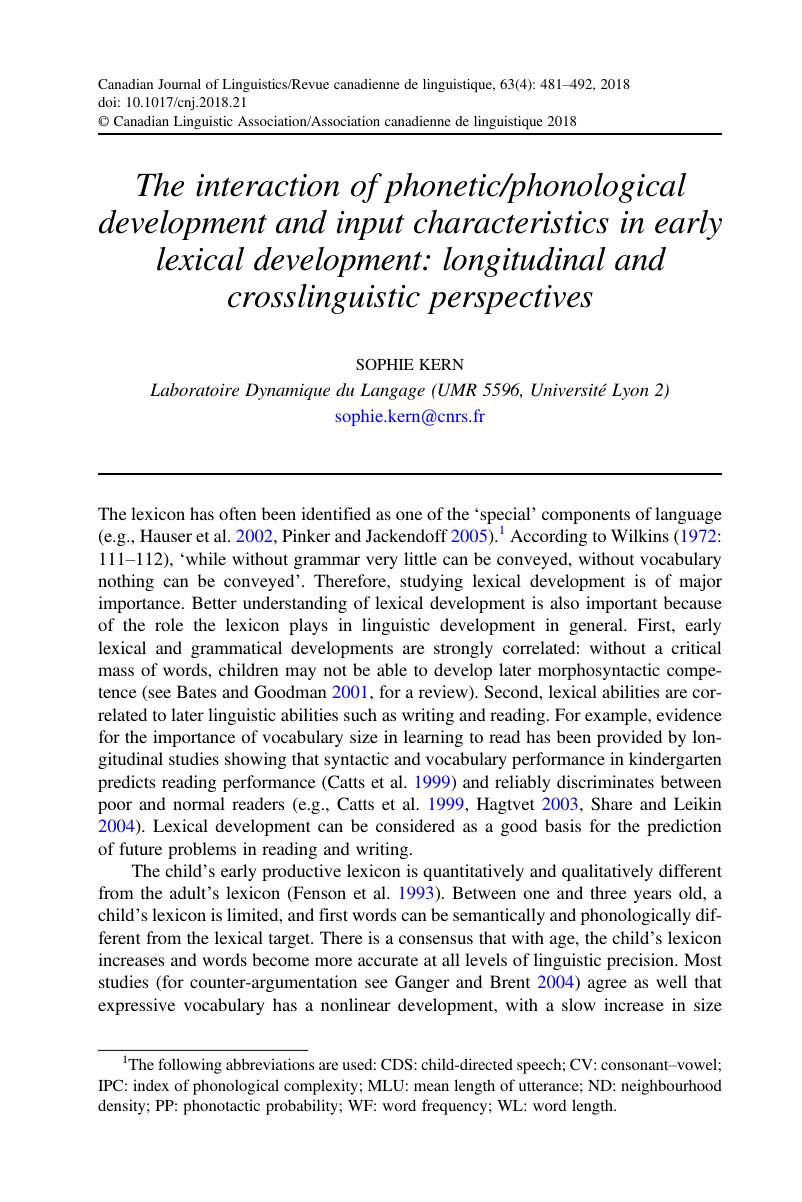Crossref Citations
This article has been cited by the following publications. This list is generated based on data provided by Crossref.
Mairano, Paolo
and
Santiago, Fabian
2020.
What vocabulary size tells us about pronunciation skills: Issues in assessing L2 learners.
Journal of French Language Studies,
Vol. 30,
Issue. 2,
p.
141.
Golmohammadi, Golnoosh
Sakhai, Farhad
Asadollahpour, Faezeh
Nouhi, Kiana
Jafari, Naemeh
and
Baghejari, Zahra
2024.
Adaptation and validation of the word complexity measure for Persian-speaking toddlers.
First Language,
Vol. 44,
Issue. 4,
p.
422.



